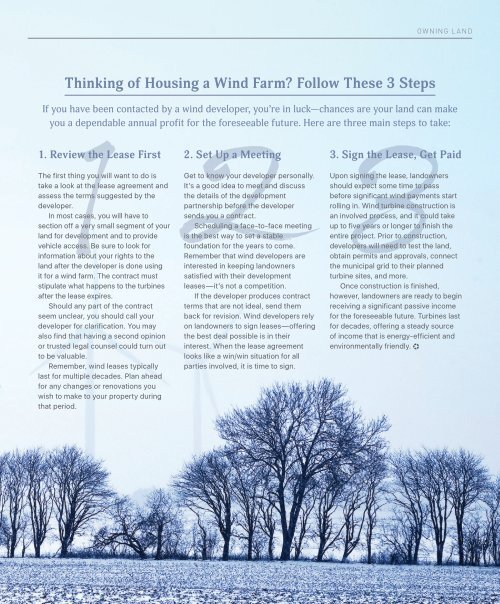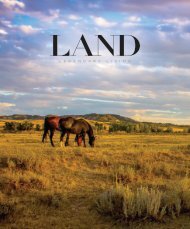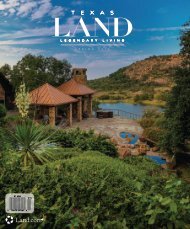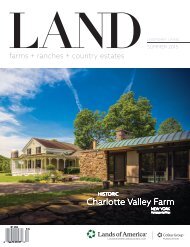Winter 2017
LAND
LAND
Create successful ePaper yourself
Turn your PDF publications into a flip-book with our unique Google optimized e-Paper software.
OWNING LAND<br />
Thinking of Housing a Wind Farm? Follow These 3 Steps<br />
If you have been contacted by a wind developer, you’re in luck—chances are your land can make<br />
you a dependable annual profit for the foreseeable future. Here are three main steps to take:<br />
1 2 3<br />
1. Review the Lease First<br />
The first thing you will want to do is<br />
take a look at the lease agreement and<br />
assess the terms suggested by the<br />
developer.<br />
In most cases, you will have to<br />
section off a very small segment of your<br />
land for development and to provide<br />
vehicle access. Be sure to look for<br />
information about your rights to the<br />
land after the developer is done using<br />
it for a wind farm. The contract must<br />
stipulate what happens to the turbines<br />
after the lease expires.<br />
Should any part of the contract<br />
seem unclear, you should call your<br />
developer for clarification. You may<br />
also find that having a second opinion<br />
or trusted legal counsel could turn out<br />
to be valuable.<br />
Remember, wind leases typically<br />
last for multiple decades. Plan ahead<br />
for any changes or renovations you<br />
wish to make to your property during<br />
that period.<br />
2. Set Up a Meeting<br />
Get to know your developer personally.<br />
It’s a good idea to meet and discuss<br />
the details of the development<br />
partnership before the developer<br />
sends you a contract.<br />
Scheduling a face-to-face meeting<br />
is the best way to set a stable<br />
foundation for the years to come.<br />
Remember that wind developers are<br />
interested in keeping landowners<br />
satisfied with their development<br />
leases—it’s not a competition.<br />
If the developer produces contract<br />
terms that are not ideal, send them<br />
back for revision. Wind developers rely<br />
on landowners to sign leases—offering<br />
the best deal possible is in their<br />
interest. When the lease agreement<br />
looks like a win/win situation for all<br />
parties involved, it is time to sign.<br />
3. Sign the Lease, Get Paid<br />
Upon signing the lease, landowners<br />
should expect some time to pass<br />
before significant wind payments start<br />
rolling in. Wind turbine construction is<br />
an involved process, and it could take<br />
up to five years or longer to finish the<br />
entire project. Prior to construction,<br />
developers will need to test the land,<br />
obtain permits and approvals, connect<br />
the municipal grid to their planned<br />
turbine sites, and more.<br />
Once construction is finished,<br />
however, landowners are ready to begin<br />
receiving a significant passive income<br />
for the foreseeable future. Turbines last<br />
for decades, offering a steady source<br />
of income that is energy-efficient and<br />
environmentally friendly. °
















